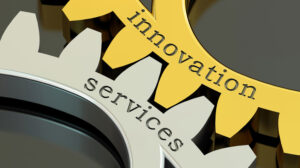Customer preferences have driven a significant change in the role of the contact centre. A phone call is no longer the first choice to contact an organisation, it is now an escalation when other channels do not work.
So, how does this affect a company’s approach to its contact centre?
Let’s split this into three areas – people (culture, management and recruitment), spaces (physical locations – office or home), and technology (phones and collaboration systems).
People
If the call coming to an organisation is more important, then the people answering it have a more elevated role. Their function changes away from repetitive tasks into unique problem solving, often within a larger group. This drives a need for employees to start at a higher skill level, and continue to supplement this with more training. Agents should also be empowered more to ensure they can fully own a customer’s problem to resolution.
You also need to ensure you equip agents with the right tools for them to effectively carry out their role e.g. wireless headsets so they can easily communicate with others whilst retaining an open channel to the customer.
Spaces
As calls move from repetitive transactions into unique problems, it places different demands on the contact centre workspace. Far from being immersed, head down in their own work, employees now need different types of workspaces depending on the work they are carrying out.
Collaboration spaces – communicate with teams to resolve customer issues
Communicate spaces – for making phone calls but not disturbing others
Concentrate – quiet spaces for focusing digital/online activity
Contemplate spaces – areas for R&R
Many organisations have reviewed home working in recent years. It definitely has its place, but for many organisations they are focusing on a more flexible approach of combining great office spaces, with occasional home working depending on the work needing to be completed.
In all areas, getting the correct acoustics should be the overriding concern for organisations. How do you ensure your employees can hear and be heard clearly?
Technology
Many organisations are trialling or deploying unified communications systems to enhance employee collaboration. These have a great role in the contact centre also. As calls become more complex, employees need an easy way to escalate the ones that are beyond their experience into teams of subject matter experts.
UC systems such as Skype for Business, or team messaging apps such as Slack or Cisco Spark enable employees to quickly see who is available, and engage them in the conversation with the customer.
There has been significant churn in enterprise technology in past years, and this is likely to continue in the next few years. So, how do you remove the risk from this change? Companies like Plantronics, the audio and wearable technology pioneer, can offer two solutions:
1. Devices that connect universally to all phones and soft-clients, and in many cases can switch between systems easily
2. A cloud based management system that can help IT departments define the right setup for each system, and manage users transitions between them.
Summary
Voice still has a significant role within customer contact, however organisation need to treat it as an escalation rather than routine. To do this:
– Recruit higher skilled people and empower them to resolve customer issues
– Redesign workspaces for improved acoustics to ensure employees can hear and be heard
– Review UC or messaging apps within the contact centre, and implement systems that help you manage transition
– Evaluate technologies, such as headsets and device management software, that can help mitigate sound while ensuring a great communications experience on both sides of a call
Author: Guest Author
Published On: 2nd Feb 2017 - Last modified: 8th Feb 2017
Read more about - Archived Content, Poly





























